Dragonflies
At last things are beginning to catch up. A brief early morning visit to a local nature reserve to shoot a cover for a new quick reference guide to dragonflies produced a few interesting images. This publication, which I have just completed with my coauthor Brian Nelson will be available shortly. Watch the blog for more information about the release date. Dragonflies are always difficult and challenging insects to photograph. Early morning visits when the temperature is much cooler is the best time to look and photograph these magnificent insects.
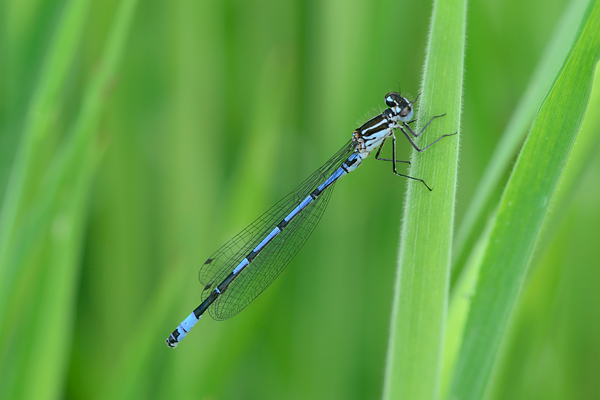
Immature male Variable Damselfly Coenagrion pulchellum
The blue damselflies pose the biggest problem for most people to identify correctly. Species can vary and sometimes the major diagnostic features can be altered or even missing. In this case the black connecting bare on segment 2 is missing, which is normally a key feature for separating it from the Azure Damselfly. It does however have the post-ocular bar between the eyes.
Nikon D800 + 200mm macro lens, fill-flash, tripod.
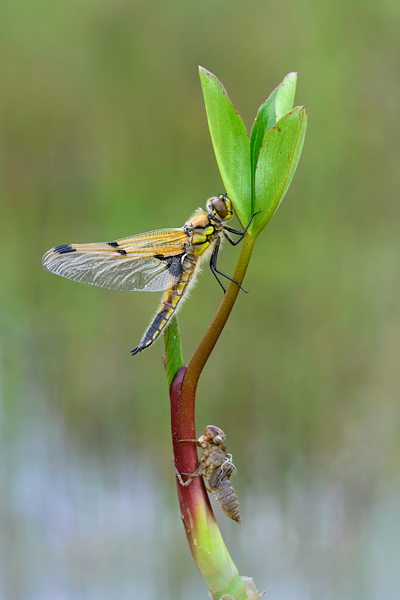
Female Four-spotted Chaser Libellula quadrimaculata
I spotted this freshly emerged female complete with exuvia on my way back to the car. I used a long lens to keep the bog pool and distant vegetation well diffused. I was flat on my chest to get the camera right down to water level to keep it parallel with the subject.
Nikon D800 + 300mm 2.8 lens, fill-flash, tripod.
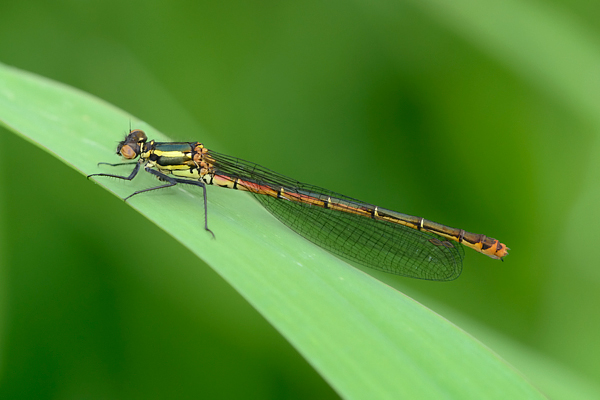
Female Large Red Damselfly Pyrrhosoma nymphula
The female form melanotum at rest among the vegetation. Note the dropped wing position below the abdomen, which is typical of this species.
Nikon D800 + 200mm macro lens, fill flash, tripod.
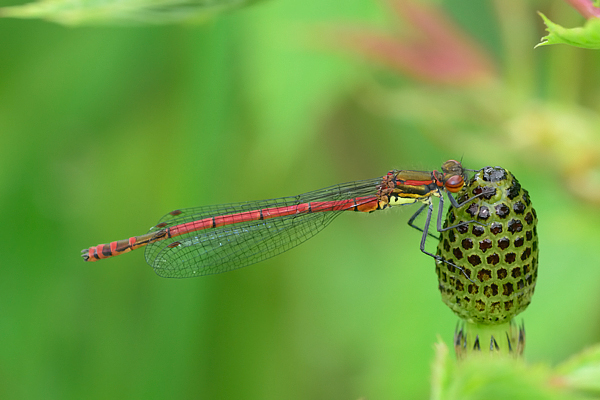
Male Large Red Damselfly Pyrrhosoma nymphula
Mature male in typical resting posture.
Nikon D800 + 200mm macro lens, fill-flash, tripod.
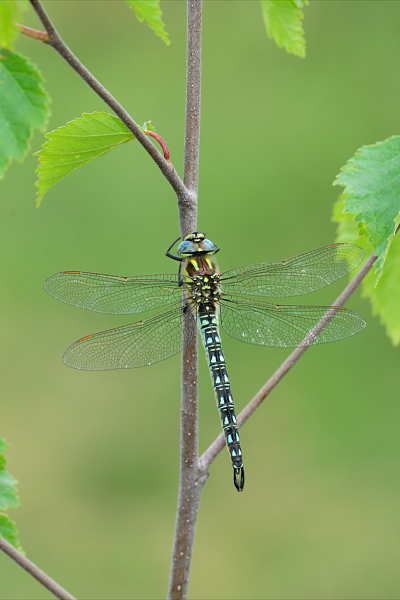
Male Hairy Dragonfly Brachytron pratense

